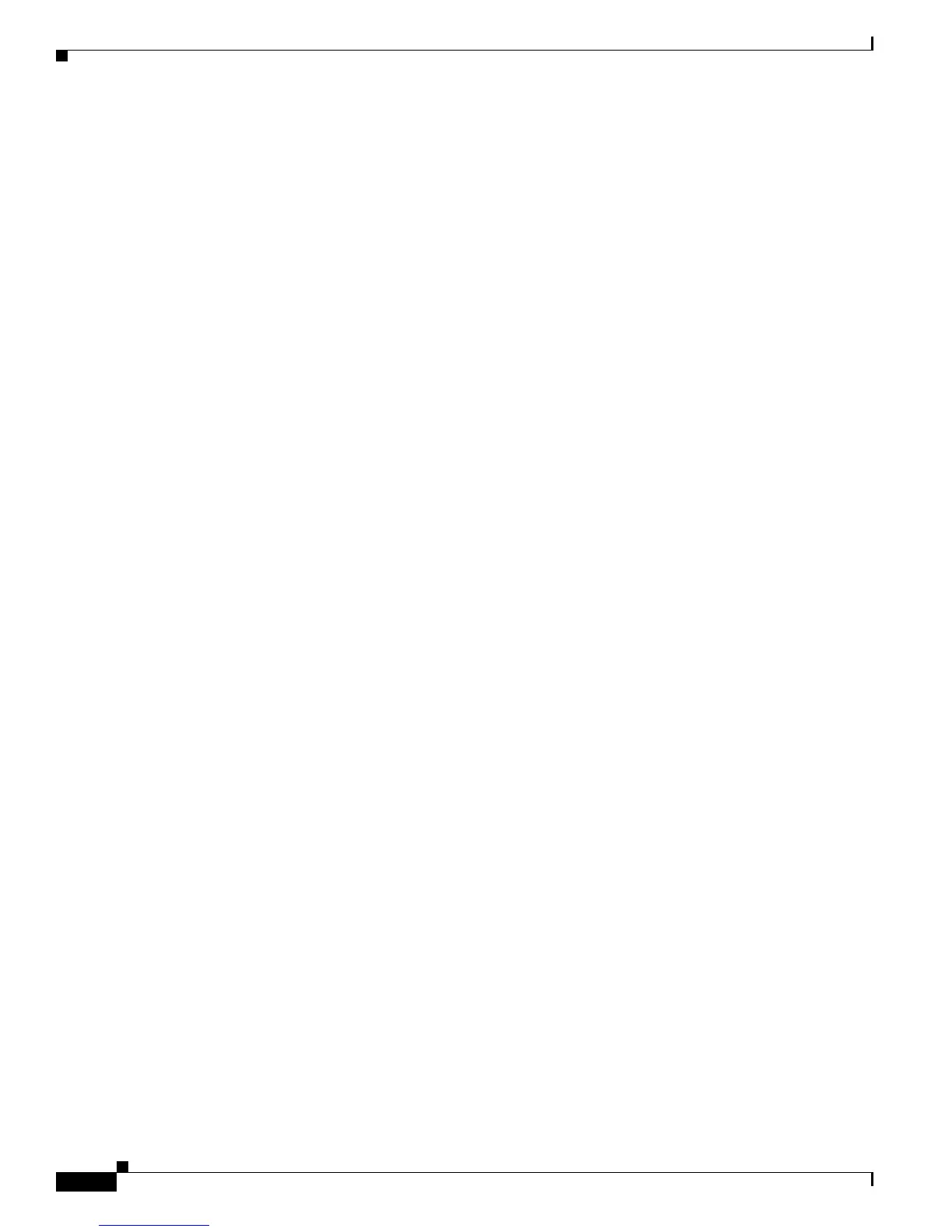13-22
Cisco 10000 Series Router Quality of Service Configuration Guide
OL-7433-09
Chapter 13 Defining QoS for Multiple Policy Levels
Configuration Examples
Configuration Examples
This section provides the following configuration examples:
• Configuration Examples for Nested Hierarchical Policies, page 13-22
• Configuration Examples for Three-Level Hierarchical Policies, page 13-23
• Configuration Example for Hierarchical Input Policing, page 13-25
• Configuring Bandwidth-Remaining Ratios on ATM Subinterfaces: Example, page 13-26
• Configuring Bandwidth-Remaining Ratios on Class Queues: Example, page 13-26
Configuration Examples for Nested Hierarchical Policies
Example 13-8 shows how to configure a nested hierarchical policy. This example configuration includes
the following:
• A bottom-level Child-Policy that defines two traffic classes: NewUsers and Bronze-Users.
• A top-level Parent-Policy that defines the class-default class, which is shaped to a rate of 512 kbps.
The Child-Policy is applied to the class-default class.
• The Parent-Policy is attached to ATM interface 1/0/0 in the outbound direction.
Example 13-8 Configuring a Two-Level Hierarchical Policy
Router(config)# policy-map Child-Policy [Defines bottom-level child policy.]
Router(config-pmap)# class NewUsers
Router(config-pmap-c)# police percent 20 400 800 conform-action transmit exceed-action
drop
Router(config-pmap-c)# class Bronze-Users
Router(config-pmap-c)# bandwidth 256
Router(config-pmap-c)# random-detect dscp-based
Router(config-pmap-c)# random-detect dscp 8 24 40
Router(config-pmap-c)# queue-limit 128
Router(config-pmap-c)# exit
Router(config-pmap)# policy-map Parent-Policy [Defines top-level parent policy.]
Router(config-pmap)# class class-default
Router(config-pmap-c)# shape 512
Router(config-pmap-c)# service-policy Child-Policy [Applies child to top-level parent.]
Router(config-pmap-c)# exit
Router(config-pmap)# exit
Router(config)# interface atm 1/0/0
Router(config-if)# service-policy output Parent-Policy [Applies parent to the interface.]
Example 13-9 shows how to configure another nested hierarchical policy. In the example, the
bottom-level child policy named Bottom consists of two traffic classes named Group1 and Group2. The
traffic matching Group1 has a minimum bandwidth guarantee of 5000 kbps; Group2 has a minimum
bandwidth guarantee of 2000 kbps and also has a DSCP-based weighted random early detection
(WRED) packet drop policy defined. The bottom-level child policy is applied to the class-default class
in the top-level Parent policy map. The router shapes the aggregate of all of the Group1 and Group2
traffic to 8000
kbps as specified by the shape command in the Parent class-default class. The
hierarchical policy is attached to outbound ATM interface 1/0/0 using the service-policy command.

